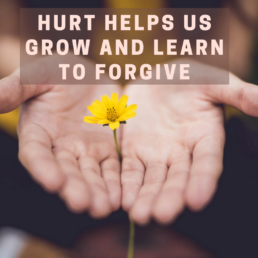How to Commit to a Daily Meditation Practice
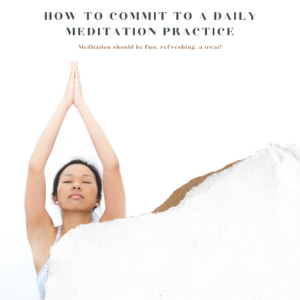 We know we "should" meditate--tons of physical, emotional, and mental benefits have been documented. We can lower blood pressure and cardiovascular health, improve outcomes for a host of medical treatments, relieve depression and anxiety, improve concentration and mental function, and more and more...but somehow we just can't seem to commit to the practice. Disciplined in so many other areas, why are we blocked from the discipline of meditation? We know we can benefit from as little as 10 minutes. The question remains: how to commit to meditating?
We know we "should" meditate--tons of physical, emotional, and mental benefits have been documented. We can lower blood pressure and cardiovascular health, improve outcomes for a host of medical treatments, relieve depression and anxiety, improve concentration and mental function, and more and more...but somehow we just can't seem to commit to the practice. Disciplined in so many other areas, why are we blocked from the discipline of meditation? We know we can benefit from as little as 10 minutes. The question remains: how to commit to meditating?
Our egos like to be busy and they like to be in control. In order to maintain that (illusion of) control, the ego can set up a lot of roadblocks to keep us from meditating. Here are some of the common strategies our egos use and some ways to counter them:
- Our egos love to tell us that we are too busy to meditate. Of course, that is not true. There is an old saying that goes: "Meditate every day for an hour unless you are too busy. In that case, meditate for two hours." There is a lot of truth to this, but an ego that thinks it is too busy probably won't agree to that! So we can set an expectation that our ego will agree to. We can achieve a lot in just five to ten minutes of meditation, and even the most stubborn egos will have a hard time arguing with that!
- Our egos often tell us that meditation is something specific that we "can't do". The inner dialogue goes something like "Meditation is not thinking; I can't not-think!" or "Meditation is reciting a weird mantra, and I don't want to do that!", or "Meditation means sitting cross-legged, and my legs can't cross like that!", or "Meditation means counting the breath; I'll feel like I'm suffocating!" Meditation can be any of these things and it can be something else. We can do a little research and find a style that seems reasonable to us.
- Sometimes our egos tell us that we can't meditate because we can't stop thinking. When my ego tried that one, I made a deal with it: I sat in meditation but let my mind process its ideas, go through the list of chores, think about the grocery list. This became "thinking time before meditation". I decided to be OK with it, and have come to think of it as a kind of clearing process. Many of my meditation friends do the same thing. As it turns out, our minds come up with some good stuff when we give them the time to process. After the processing time, we can move on to our meditation.
- In other cases, our ego puts us to sleep. When this happens, it is a good idea to make sure we keep our meditation time short and our posture pretty straight and not comfy-cozy. The ego trick of falling asleep is something that patience and persistence will help us through. For me, it was kind of like training my toddlers to not throw tantrums: I didn't cave in to candy in the grocery store, and I didn't give my own ego what it wanted, either―I sat in meditation anyway.
- Our egos can get trapped in other kinds of rigid thinking that keep us from meditating. It is best to meditate first thing in the morning, but I am not a morning person. When I had to wake early and was off to a busy start, I meditated at night instead. Now my schedule has changed so I do my meditation in the morning most of the time.
Meditation should be fun, refreshing, a treat! As we become aware of the good vibes we get when we meditate, those feelings in themselves can become the positive reinforcement that keeps us going. Till then, the tricks listed above can help answer that question, how to commit to meditating!
Join me for my meditations each Monday at 12:15pm ET on FB Live.
A Resolution to Be Happier
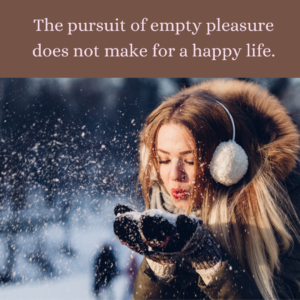 As you are thinking about your goals for this New Year, have you considered adding “be happy!” to the top of your list? Perhaps you should. There has been a lot of talk about happiness recently, and researchers are finding out about the many benefits to happiness-besides just feeling, well, happy.
As you are thinking about your goals for this New Year, have you considered adding “be happy!” to the top of your list? Perhaps you should. There has been a lot of talk about happiness recently, and researchers are finding out about the many benefits to happiness-besides just feeling, well, happy.
Happy people are also healthier, more successful, and have better relationships and greater job satisfaction. The pursuit of empty pleasure does not make for a happy life. Happiness comes from a blend of a positive outlook with meaning in life. Here are some mindset changes that can help increase your happiness:
- Adopt a “glass-is-half-full” attitude. There is plenty wrong in the world, for sure, and nobody’s life is easy. But focusing on the negatives breeds discontent. Instead, focus on what is right--and see it grow.
- Don’t compare. No matter how tempting it is when you pass a Ferrari, a mac-fabulous house, or a person with a rockin’ bod, don’t compare your life to anyone else’s. You are on your own journey, learning the things you need to become the person you are becoming. You can’t really know what anyone else is going through but you can be sure of one thing: We all have pain. It’s part of the human experience.
- Be mindful of your words. Words have power and we should use them wisely. Make it a practice to avoid hurtful words. One all-too-popular form of hurtful speech is gossip, which is like a boomerang: you won’t avoid being hurt by it if you engage in it. We can also fall into the trap of hurtful speech during conflict. Instead, use your words carefully and thoughtfully to convey your point of view, but never to hurt another.
- Let others in. Allowing yourself to trust is one of the bravest things you can do, and one of the most rewarding. If it seems scary, consider this: people are basically good. We don’t always behave that way, but most of the time, most of us do pretty well. Besides, as they say, no man is an island. To think that we can do it all on our own is illusion; humans thrive in groups. So get socially engaged, spend time with friends, and allow yourself to love and be loved.
- Give back. There is probably nothing that increases happiness—real happiness, not the “I just got a lollipop” kind of transient happiness—more than giving back. So give back—to the people in your life or to strangers; to animals, to plants, to the earth. Find a cause you enjoy and get involved. Make someone’s day. Make a contribution to the welfare of something beyond yourself. There is absolutely nothing that can make you happier.
Thought Field Therapy vs. Cognitive Behavior Therapy for Trauma
 Here’s a little nugget from the research on energy psychology, also known as cognitive somatic energy practices. Thought-field therapy (TFT) is a well-researched form of energy psychology. Cognitive behavior therapy (CBT) is a popular and widely researched modality in the world of mental health. Each modality has its place in therapeutic settings.
Here’s a little nugget from the research on energy psychology, also known as cognitive somatic energy practices. Thought-field therapy (TFT) is a well-researched form of energy psychology. Cognitive behavior therapy (CBT) is a popular and widely researched modality in the world of mental health. Each modality has its place in therapeutic settings.
However, in the world of trauma treatment, energy psychology seems to have a greater efficacy than CBT. Our colleagues in Kurdistan, Iraq, along with ACEP member Suzanne Connolly, recently published a study that illustrates the point.
Study participants live in Garmian, a region that has experienced genocide, chemical attacks, displacement, and violence. Predictably, people who have survived these things seem to have high rates of mental health problems. In fact, researchers believe that as many as 20% of people in post conflict settings such as Garmian experience mental health disorders.
The study is small and we need more studies before drawing big conclusions. But these results are compelling!
What did they study?
Pegah Seidi is a psychotherapist and lecturer at Garmian University in Kurdistan. She treated 31 people with trauma symptoms, using either CBT or TFT.
The Garmian region has experienced a lot of violence, atrocities, and political upheaval. Many people in the region are suffering from trauma-related mental health problems. There is poor mental health infrastructure in the area, and there is a huge need for high quality, easily delivered, and cost effective mental health services.
What did they find?
The CBT group had 13 participants. Their symptoms stayed the same or even worsened. Some participants dropped out of the study.
The TFT group had 11 participants. All participants experienced an improvement in symptoms.
A third group with 7 participants received CBT and did not improve. They then switched to TFT, and their symptoms improved.
Overall, people treated with CBT did not fare well. This is not surprising to me. Fifteen years ago when I was in grad school, my research “pet project” was trauma. The literature in those days was filled with CBT studies with poor results and high dropout rates. This is why I searched outside the mainstream and found energy psychology.
Today, with results like this, I dream of having energy psychology techniques become part of the mainstream. Don’t you?
What is the significance of this study?
Energy psychology is among the top ten psychotherapeutic techniques in terms of research. This small study adds to our understanding of its benefits and effectiveness. As Bessel Van der Kolk thoroughly explains in The Body Keeps the Score, cognitive therapies do not seem to move the needle on trauma, but involving the body does.
This TFT study adds to our understanding that energy psychology is effective for treating trauma. You can request a copy of the study here.
More research will help move the field of trauma therapy forward.
To see how energy psychology can work for you, set up a free 20-minute conversation with me.
Camping in the Rain
Camping in the rain: a memory, and three rules for living
Summer 1977. Somewhere outside of Winston-Salem, NC.
The car was hot, its white vinyl seats slick with perspiration. When we were in range of a radio station, my parents sang along to John Denver, Kenny Rogers, Willie Nelson. When radio stations were not in range, they did their best on their own. My Irish-twin sister Kathleen Rachel and I groaned. (Jayne, you missed it!)
We stopped at a traffic light. A group of long-haired, bearded men on motorcycles stopped beside us. One apparently was trying to get my parents' attention.
Mom gasped. "Oh! Joe! I'm scared," she cried. "It's a motorcycle gang! What do they want?" and similar protestations.
"It's OK, Ellen, roll down the window," Dad replied. Encouraged. Insisted.
Mom did.
Garbled words; a short conversation; surprise and gratitude from my parents.
Mom rolled up the window and explained: The motorcycle gang had saved us. The wheel of our camper, a popup trailer, was loose. It looked like it could fall off. We needed to get off the road.
Rule 1: People who look strange and seem scary can be very kind and helpful.
Mom and Dad decided to ditch the camper and invest in a tent, so we headed to the mall in Winston-Salem. It was 1977, and we did not have GPS and smartphones. Mom found this haven thanks to Rand McNally.
Mom has great map-reading skills. (I did not inherit those skills. I spent years on a perpetual adventure because, before GPS, I was always lost.) But Mom could get us anywhere. She deftly followed those lines as they left the page and turned up halfway through the map book. It was impressive.
The mall, found. A search for a payphone, and the number to the camper rental company. Then, Sears. Tents, equipment, boredom.
The day was tedious for Kathy and me. This mall was small, nothing like our Columbia Mall, with its gigantic roaring fountains (that periodically served as showers for the long-haired, bell-bottomed fans of the Grateful Dead) and polished-brick floors (that later proved treacherous for women in heels) and strange-smelling gourmet shop (where I was introduced to bagels, lox, and Nutella).
The most interesting thing about the Winston-Salem mall was that it housed a radio station. Even more interesting was that the DJ asked Kathy and me if we would like to come in and talk to him on the air.
I was shy, but Kathy was game. She disappeared into the station ― she was going to be on the radio! ― while I was left wondering how I had let that opportunity pass me by. I had only wanted to be cajoled a little. Envy replaced boredom as I pondered my fate.
Soon Kathy emerged from the radio station. She was not, however, gloating in her triumph.
In fact, she was furious. Unspeakably angry. Seething. If anger could come to life, it did so in the form of my 7-year-old sister, in the Winston-Salem mall.
"What's wrong with her?" I asked my mom.
"The man on the radio asked her, 'Where are you from, son?'"
I felt a little sorry for her. "What did she do?" I asked.
"She said, 'I'm a girl.'"
Well. What else could one do? Kathy grew her hair after that. For her, the problem was fleeting and easily rectified. But still infuriating, at the time.
Rule 2: Sometimes, it pays to be shy. Or, to frame it differently― Maybe good luck, maybe bad luck: who's to say?
The rest of the day unfolded slowly ― very slowly ― in the Winston-Salem mall.
At last we were ready: All our belongings stowed in our new car-top carrier and the trunk of our Oldsmobile Omega SX (which, in a few short years, would torture Kathy and me for reasons that, if you imagine being in middle school and riding in a car emblazoned with "SX", will be apparent). We set off to our campground.
Mom and Dad cheerfully singing "On the Road Again", with or without Willie.
We pulled into the campground at night, in the dark, as a gentle rain began to fall.
In the '70's, tents were not like the high-tech tents of today, with their quick setup, flexible poles, lightweight fabric. This thing was a beast.
By lantern light, Dad allowed us to help. First, we spread out the tent, then pounded its stakes with a rubber mallet into hard earth. Next, Dad painstakingly threaded five sets of rigid metal poles through canvas sleeves, blindly willing them to marry in the middle. (This was about the time I learned that in the world of tools and tents, there are parts called male, and other parts called female, and I wanted to die from embarrassment.)
Finally, the tent was up. We went inside and laid out our sleeping bags. The rain picked up; Dad climbed back outside and covered the entire tent in a giant sheet of clear plastic.
Now it was time to sleep.
It had been a long day.
Outside, the rain poured. We knew it poured, mostly because we could hear it beating on our plastic tarp. Inside, the rain did not touch us. However, we were beginning to sweat. It was probably 98 degrees in there, with 99% humidity.
Then the giggle started.
"Heeheehee. Heeheehee. Heeheeheee."
Mom's giggles picked up steam. They were contagious. Soon we were all in uproarious laughter. We laughed till it hurt. We laughed till we cried. We laughed till we couldn't laugh anymore.
And then we fell asleep.
Rule three: If you don't know whether to laugh or cry, go ahead and laugh.
Of all the vacations we had ― the trips to Ocean City, MD; the camping trips, in camper or tent; the higher-end excursions ― this one is the one I remember most.
It was not what one would have called a good day. However, it sure was memorable, and the memory makes me giggle.
Our most uncomfortable experiences tend to be the ones we remember most ― and remember most fondly. Or so it seems to me.
So ― moral of the story here, and congrats for sticking around to get to it — if you ever find yourself with a broken camper and a slightly traumatized daughter, pitching a brand-new, complicated tent in the dark, and then sweltering under a giant plastic bag during a hot North-Carolina rainstorm ― I hope you laugh.
Faces Can Determine How We Feel
 Your face reflects the emotions you feel. This is obvious: When we are sad we frown. When we are angry our eyes get smaller and everything on our faces becomes more horizontal and set. When we are happy our eyes light up and we smile. And we can instantly tell the difference between a real smile and a fake one. Did you ever wonder, or notice, what the difference actually is? In a real smile, the tiny muscles of the bottom eyelid move upward in a crescent. Before I learned this a few years ago, I couldn’t have told you what the difference was—I just knew it when I saw it. Our intuitive understanding of facial expressions is part of our empathy and ability to connect to others. Facial expression is a huge part of nonverbal communication.
Your face reflects the emotions you feel. This is obvious: When we are sad we frown. When we are angry our eyes get smaller and everything on our faces becomes more horizontal and set. When we are happy our eyes light up and we smile. And we can instantly tell the difference between a real smile and a fake one. Did you ever wonder, or notice, what the difference actually is? In a real smile, the tiny muscles of the bottom eyelid move upward in a crescent. Before I learned this a few years ago, I couldn’t have told you what the difference was—I just knew it when I saw it. Our intuitive understanding of facial expressions is part of our empathy and ability to connect to others. Facial expression is a huge part of nonverbal communication.
So we know that our faces convey how we feel. But did you know that faces can determine how we feel? Or to be more precise, changing the expression on our faces can change the emotions we experience. Since the 1980’s, researchers have found the putting a smile on makes us happier. Sales trainers have been recommending for decades that we put a smile on our faces before picking up the phone because it will make us sound happier and more likable.
More recently, researchers have found that the smile doesn’t even have to be genuine. We can “fake it till we make it”. Mori and Mori of the University of Tokyo conducted a study, published in 2009, using rubber bands and latex bandages to force participants’ cheeks upward in a smile position, or downward in a frown. In the smile position, the participants felt happier, and in the frown position, they felt sad. A follow-up study published in 2013 found that the smilers had a better opinion of others when they were smiling. Wow. We can plaster on a fake smile and not only feel happier, we’ll like people more.
And then there is the work of Amy Cuddy, a social psychologist, and researcher who investigates body language and facial expression. She presented one of the most popular TED talks ever; you can see it here. In her talk, Cuddy explains how our posture and facial expression affect our mood. She shares lots of tips on how we can use our bodies to feel more powerful and happy. One of her suggestions is to put a pencil in our mouth to force our cheeks back into a smile position in order to feel happier.
I used to love sharing this with my students when I taught at the local community college. I would sometimes ask them to put their pencils or pens between their teeth to see if they started feeling happier. Usually, they wound up laughing, probably because we all looked a little ridiculous. I have also used this knowledge to my own advantage many times. When I start to feel unhappy, I try to remember to plaster a smile on my face. Soon enough, I’m back to feeling peaceful and happy.
If you decide to test this out for yourself, I’d love to hear how it goes—leave a comment below!
Make Small Choices That Yield Big Results
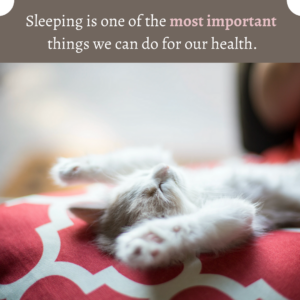 Americans are always in a hurry. We rush to work and rush to get the job done. We then rush home, and rush to get dinner on the table, kids to their activities, homework done, work some more. We rush to get to bed and hope to fall asleep really fast because the morning will be here before you know it, alarms dragging us out of bed to do it all over again.
Americans are always in a hurry. We rush to work and rush to get the job done. We then rush home, and rush to get dinner on the table, kids to their activities, homework done, work some more. We rush to get to bed and hope to fall asleep really fast because the morning will be here before you know it, alarms dragging us out of bed to do it all over again.
No wonder we love weekends.
But what are we losing in our fast-paced modern times? Americans are stressed – indeed, almost a quarter of respondents to an American Psychological Associate “Stress in America Survey” reported extreme stress; we are famously unhealthy, with chronic health conditions on the rise: fifty percent of US adults are living with some kind of chronic disease, and 1 in 3 of us is obese. And we aren’t particularly happy: one in ten Americans is living with depression, almost a third of us will experience anxiety in our lifetime, and up to 90% of all doctor visits are related to stress.
When we slow down, we create space for more happiness and health in our lives. When we rush around from obligation to obligation, where is the joy? …and what is the point?
In order to take back our lives and create a better quality of life, we can make some small choices that will yield big results:
- Set a bedtime and make it sacred. That bedtime should be a little more than eight hours before the alarm will go off the next morning. When we give our bodies a chance to rest and get a good nights’ sleep, we feel different. Research links sleep deprivation with everything from depression to weight gain. Sleeping is one of the most important things we can do for our health, and one of the things we really undervalue in our culture. For many of us who struggle with insomnia, one of the best treatments is to set and keep regular sleep and wake times.
- Decide what you can let go of. If your day is crammed with after-school activities for the kids, which ones are really worth it? A stressed-out kid who is shuttled between gymnastics, dance, and softball isn’t necessarily living the ideal childhood. I remember sitting in the lawn as a kid, watching insects and eating the buds of yellow clover flowers. I can still taste them. I’ll bet my kids don’t know what those flowers taste like; they spent their youth going to practice. It is a shame.
- If you are a slave to your housework, think about what you can live without and try to build inefficiencies for the things that matter. A professional organizer can help with that. I remember seeing on the Oprah show years ago a woman who was driving her family crazy because she was such a cleaning freak. After an intervention, she and her family decided not to sweep the floor every night. One less thing to do, one less thing to argue about. In my own home, I decided to trade ecology for the convenience of disposable cleaning wipes; I figured I wasn’t going to solve the waste disposal crisis anyway, and it makes cleaning easier. What are the things you can do to simplify the tasks you have to keep? Which are the tasks you can let go?
- Take a walk at lunchtime. Even five or ten minutes away from your desk, outside in the real air, is like pushing the re-set button on the day. Take a friend, and don’t talk about work unless it is to laugh about it. In my 20’s, I used to relish lunchtime walks, which were such a reprieve from an unfulfilling job. I thought back then that those walks were moments I’d cherish for the rest of my life. Twenty-five years later, I can say I was right.
- Smell the roses. Really. Walk by flowers in bloom and try to catch their fragrance in the air. It reconnects you to the moment and to nature. And makes you happy.
- Greet your family when you come home. Make it a ritual. Smile, make eye contact, have a hug. It will connect you to them and allow you to pause and transition to the next thing. And then you will be more mindful about what you are doing.
- Bless your food. It is amazing and wonderful that we have such a bounty of colorful, life-giving foods available to us. Taking the moment to honor it before eating slows the pace, increases mindfulness, enhances enjoyment. And you’ll eat less, and better.
- Take a bath. Let the kids fold their laundry or run the vacuum. Your emails can wait. That endless TV will still be there when you finish. A good soak does a world of wonder to wash away the stress of a busy day.
- Take a nap. If you are really tired, take a nap. Just make it a short one or it may disrupt your sleep cycle. Set your alarm for 15 minutes and close your eyes. You will be amazed at how much better you feel.
- Don’t buy into the busy-ness. We are caught up in the grand illusion that every little task is uber-important. Imagine you are 90 years old. What would your old, wise self say to the present-day you? My guess is that it would be something like, “Slow down, enjoy your life. It is fleeting.”
Be Present With What Is
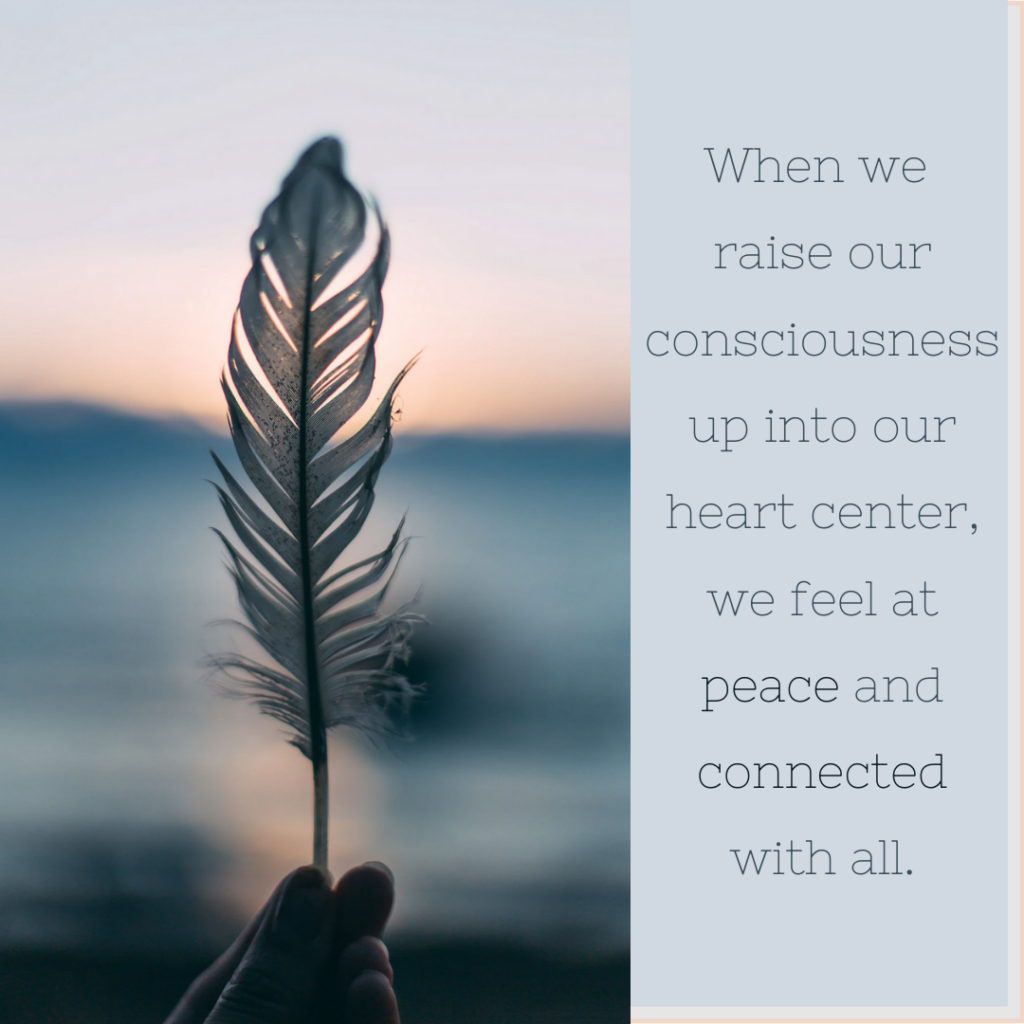 I recently had a client who had a bad case of “the shoulds.” She was stuck in a counterproductive mindset, feeling like “I should do this” and “I should be that”. There are so many things that she was telling herself she “should” be and do that she couldn't appreciate where she actually was in her life, let alone have clarity about the direction she was going. And she certainly couldn’t have any fun with it.
I recently had a client who had a bad case of “the shoulds.” She was stuck in a counterproductive mindset, feeling like “I should do this” and “I should be that”. There are so many things that she was telling herself she “should” be and do that she couldn't appreciate where she actually was in her life, let alone have clarity about the direction she was going. And she certainly couldn’t have any fun with it.
This is so common. When I look back on my own life I realize that there were many times when I had a bad case of the “shoulds” myself. When we get stuck thinking about what we should be doing and how things should be going and what kind of person we should be, instead of being present with what is, we are disconnected from our authentic self. We are stuck in our ego-level of consciousness. This drains us, clouds our perceptions, and makes it nearly impossible to build an effective and happy life.
Sometimes I think that if I could share only one thing with my clients, it would be to let go of the “shoulds” and get on with the business of life unfolding. Forget about what others expect. Forget other people’s agendas, and even your own perceived agenda, with all of the tension and disconnect that brings. Get out of your ego and into your heart. When we raise our consciousness up into our heart center, we feel at peace and connected with all; we are able to trust in the order of things and trust ourselves.
If you are suffering from the “shoulds”, stop! Right now, take a few deep breaths and soften into your heart center. As you begin to connect to your heart, ask your Higher Self to release you from the expectations you place on yourself and the expectations others place on you. With intention, with practice, you will be able to start living an authentic and joy-filled life of purpose—present, confident, and graceful with what IS. Such a better place to be from which to weave a life.
Memory Reconsolidation: I Remember But I Don’t Feel Upset
 One of the best things about being an energy psychology practitioner is seeing that look of wonder in our clients’ eyes when their traumatic memories are no longer traumatic.
One of the best things about being an energy psychology practitioner is seeing that look of wonder in our clients’ eyes when their traumatic memories are no longer traumatic.
“I remember it, but I don’t feel upset about it,” they say.
It’s the kind of experience that makes this profession so rewarding.
I remember one instance in particular. A client was working on a childhood trauma. He was in tears ― lots of them ― before we even started working. When I asked him to rate his distress on a scale of 0-10, he said it was 100. He looked as if he were telling the truth.
We began working. If you practice one of the meridian-based forms of energy psychology (like Thought Field Therapy and Emotional Freedom Techniques), you know the drill. We tapped, and down the rating went: 10 to 6, 6 to 3, 3 to 0 or 1. At the end of the hour, and the end of the story, we arrived at a wide-eyed, “How-did-this-happen, I-remember-but-I-don’t-feel-upset, it’s-a-ZERO!!”
Memory reconsolidation
How did this happen? A part of the answer, at least, has to do with memory reconsolidation.
Neuroscientists used to think that once something was encoded into long –term memory, it was there for good. The emotions associated with a memory were permanent. Or so it seemed.
In the late 1990’s, researchers began studying memory reconsolidation. It turns out, thank goodness, that memories are changeable. When memories are activated ―when we remember― the memory becomes labile. This means that every time we access a memory, that memory can be changed, or reconsolidated. When a memory is reconsolidated, the uncomfortable emotions associated with it can be erased.
The concept of memory reconsolidation has been popularized by Bruce Ecker (see his 2015 article), with an emphasis on the role of disrupted expectations as key factor. Pairing an emotional memory with discrepant information is a key component of all therapy for anxiety, yet most anxiety therapies offer at best, “extinction”.
And extinction is really a misnomer. Like the salivation response of Pavlov’s dogs, after “extinction”, so too with extinction-oriented therapy: anxiety-provoking memories, and their flood of feelings, can come back unbidden at any time.
Memory reconsolidation is something different: an elimination of the anxiety associated with a previously disturbing memory. Discrepant emotional information alone cannot explain the memory reconsolidation process.
The mechanisms and conditions of memory reconsolidation are complex and subtle, as Kindt explains, but the startling and rapid effects of acupoint tapping suggest that energy psychology may contribute a crucial component.
Tapping on acupoints can bring about a shift in physiology, so that activation of the memory no longer evokes the previous pattern of bodily feedback. As neuroscientist Antonio Damasio (2000) argues, emotions are the brain’s interpretation of the body’s state; if the body’s state is calm then the emotion has gone. The memory will reconsolidate with this changed information. You can read more of Damasio’s research here, or check out his book here.
Memory reconsolidation and energy psychology
Memory reconsolidation offers a powerful tool to help overcome these issues and can facilitate transformational change. It is helpful to understand how it happens. Researchers have identified three key ingredients:
- Vividly remember
- Change the internal physiology
- Repeat
In his 2015 article, David Feinstein explained energy psychology tapping in terms of memory reconsolidation. His article is worth a read; the link is here.
Meridian tapping is soothing, rhythmic, and relaxing. Studies show that tapping on meridian points changes body chemistry and brain activity:
- A recent study using functional magnetic resonance imaging (fMRI) showed deactivation in limbic regions following tapping.
- A 2009 study, using electroencephalogram (EEG), demonstrated healthy changes in brainwave patterns after trauma treatment with energy psychology.
- A 2012 study showed energy psychology reduces levels of salivary cortisol.
When we do energy psychology tapping, we ask our clients to activate the memory. While they do that, they are tapping on meridian points. Our clients are simultaneously activating a troubling memory and calming their internal physiology.
Energy psychology is a good way to facilitate memory reconsolidation; memory reconsolidation is a good model to explain how energy psychology works. No matter how you look at it, energy psychology helps our clients heal old wounds and feel better about themselves.
Research Shows: EFT Helps People Lose Weight & Maintain Weight Loss
 People who are overweight generally know what to do. Eat less, eat better, exercise more. Pretty simple, right? So why does it so often feel impossible? As with so many human problems, we know better, but we don’t seem to be able to do better.
People who are overweight generally know what to do. Eat less, eat better, exercise more. Pretty simple, right? So why does it so often feel impossible? As with so many human problems, we know better, but we don’t seem to be able to do better.
There are many factors that have very little to do with the knowledge that leads us to the sleeve of Girl Scout cookies. Or the bag of chips. The pint of Americone Dream. The drive-through window.
I’ve often observed that if we all could get our feelings to line up with what we know, hardly anyone would have a problem. It seems to me that we usually are pretty smart about things. Our problems, therefore, are not usually problems of information. They are problems of emotion, of energy, of habit.
They are problems for which the world of energy psychology offers solutions.
An overweight world
If you are dealing with weight issues, you are not alone. The rates of overweight and obesity around the world continue to climb. A New England Journal of Medicine report shows that the rate of obesity worldwide has doubled since 1980, affecting 5% of children and 12% of adults. In the US, researchers project that half of the adults will have obesity by 2030.
We at ACEP are body-positive. As mental health and health practitioners, we want our clients to feel good in whatever body they have. However, we must also acknowledge the health effects of obesity and overweight: increased risk of type 2 diabetes, kidney disease, hypertension, cardiovascular risk, certain cancers, other chronic conditions, as well as more depression and anxiety. Worldwide, overweight and obesity contributed to 4 million deaths in 2015.
By profession, by vocation, by calling, we are helpers. And so, we have been watching with great interest the work of Peta Stapleton and her colleagues, who have been using EFT to treat weight problems. We’re proud that she’s an ACEP member.
EFT and weight loss – the research
Stapleton is a world-renowned researcher who focuses on clinical applications of EFT “tapping” therapy. She has authored several books on ways to use EFT. She has conducted groundbreaking research on EFT for health, wellbeing, depression and anxiety, trauma, and weight issues, including food cravings. Stapleton’s latest work focused on internet delivery of an eight-week program of EFT for weight loss.
The internet, despite its flaws and limitations, is becoming a valuable tool for delivering health and mental health services. This study examined whether on-line delivery of EFT for psychological symptoms, food cravings, and consumption of craved foods, and weight management, would work.
It does.
Nearly 1,000 people from around the world signed up to participate in the eight-week study. After the usual attrition, more than 500 people ― mostly women, by a 9:1 ratio― joined the study. They were randomly placed into an EFT treatment group (314) and a no-treatment control group (228).
Participants in the study reported their height and weight, so researchers could calculate their BMI. They also reported their food cravings; power of food (how hard it was to resist when, say, they walked across a crowded pizza shop); restraint (a kind of “chronic dieting”, which is an indication of disordered eating); and their levels of depression, anxiety, and physiological symptoms (like headaches). People who got eight weeks of EFT delivered to their laptops and smart-phones lost weight. Their food cravings went down remarkably, they felt less controlled by food, and they exhibited less dietary restraint. They also had fewer aches and pains, as well as less depression and anxiety. Perhaps best of all, though only 20% of the participants kept tapping after the eight weeks, they all maintained their weight losses a year after the study concluded.
Making it real
EFT and other forms of energy psychology have gained popularity over the past couple of decades. More people in the West are open to an Eastern paradigm, which is one of the theoretical underpinnings of energy psychology.
Many of us remain skeptical but open to evidence. The research is clear in study after study: EFT works. In this case, it can help people lose weight and maintain their weight loss. It helps reduce food cravings and helps people feel less overpowered by food. It eases up on restricted eating and the boomerang that often accompanies it. It does all this while addressing depression, anxiety, and physiological symptoms.
If you, a client, or a loved one is interested in getting more information about using EFT for weight loss, go to the ACEP website to find a list of qualified practitioners.
Hurt Helps Us Grow and Learn to Forgive
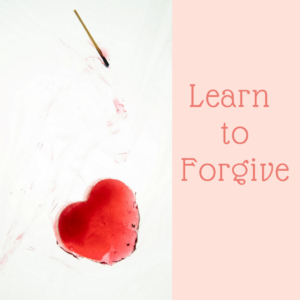 If you are human, you’ve been there – it comes with the territory. We’ve all been hurt. The bad news is that it hurts. But there is good news—the hurt helps us grow. One way to grow from our hurt is to learn to forgive.
If you are human, you’ve been there – it comes with the territory. We’ve all been hurt. The bad news is that it hurts. But there is good news—the hurt helps us grow. One way to grow from our hurt is to learn to forgive.
Forgiveness does not mean that what happened was OK, that we are condoning the thing that hurt us, or that we are necessarily reconciling with the person who hurt us. Forgiveness is a positive choice. It is a way for us to move out of our past, take back our power, and become happier people. I have experienced the benefits myself and seen them in many clients as well. Once the choice to forgive is made, it becomes a process. The following five steps help us with the process:
- Recognize that forgiveness is empowering: When we forgive, we take our power back from the person who hurt us. We give away our power when we allow another person’s past hurtful action to continue to hurt us in the present.
How to do it: Take a few moments to center yourself and then imagine and feel what life will be like for you when you are released from this hurt. Imagination is the seed of creation, so just by daydreaming about it you begin to create a new reality.
- Invoke your Higher Self: Healing is never possible without involving the Higher Self, which is who we really are. We are spiritual beings having a human experience, right? To reconnect to who you really are, practice invoking your Higher Self and accelerate the process of healing.
How to do it: Invoke your Higher Self by simply asking, “Higher Self, help me to forgive” and believe that the result is guaranteed. Because it is! The more we ask, the more – and more quickly – we receive.
- Cut the cords: Anger and hurt create energy cords that drain and cloud our energy fields. When healing occurs, those cords are cut. They can be cut in a “bottom-up” or “top-down” process – either wait for healing and know the cords are dissolved, or actively cut them through intention and accelerate the healing process.
How to do it: Close your eyes, center yourself, and invoke your Higher Self. Feel light and love in your heart center. Then imagine the person who hurt you; surround both of you in a blue light. Then say, “I return your rightful energy to you, and I retrieve my own rightful energy to myself.” Pay attention to any feeling you experience—it can be slightly dizzying, so breathe and trust that your Higher Self is guiding the process.
- Practice mindfulness: In those moments when you are upset by the hurtful past, practice being present. In this moment, where are you? In this moment, what is actually happening? Though the emotions certainly are real the pain you feel is an echo of the past, and the hurtful act is not part of your present reality. Reconnect to the present moment to help release the grip of the past and those related emotions.
How to do it: You can connect to the moment by focusing on something tangible – like your breath or the feeling of your feet on the ground or the pen in your hand. You can create a grounding ritual such as touching your forefinger to your thumb to remind you that you are OK in this moment.
- Learn from the experience: It is a truism: Every single thing that happens to us happens for a reason. The corollary to this idea is therefore that we are not victims. Our negative experiences are here to teach us and to help us become more fully who we really are.
How to do it: When you are calm and centered, ask yourself “What was my role in this hurtful situation? What is my lesson? What have I gained from this experience?” The answers are there for you, and embracing them is a huge step in taking back your power.
Forgiveness is an empowering choice and one worth making. Having done it, you will feel lighter, clearer, and more like yourself.










